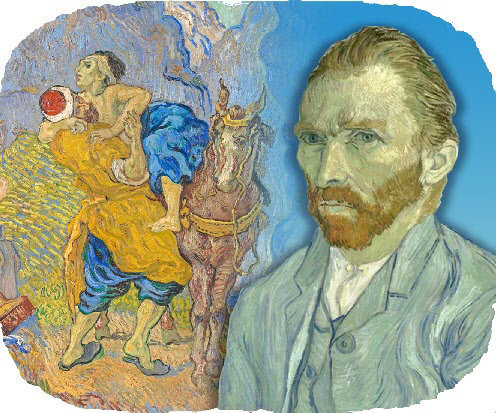Van Gogh’s Samaritan
Van Gogh’s Samaritan
Posted July. 12, 2023 07:58,
Updated July. 12, 2023 07:58

Vincent Van Gogh imitated other artists' paintings through the latter years of his life. As he wrote in his letter to his brother Theo, he believed that just as musicians added their interpretations while playing Beethoven, painters could do that too. He was not bothered by what others thought. Van Gogh’s “Good Samaritan,” which he painted before he passed away in 1890, was his “performance” of Eugene Delacroix’s original painting.
As the title suggests, Delacroix’s painting is based on the Good Samaritan in the book of Luke in the bible. In reply to the lawyer’s question, “Who is my neighbor?” Jesus replied that the Samaritan, who had compassion on a man who had been robbed and left half dead, set him on his mule and took him to an inn, was a real neighbor, instead of the Levite who ignored him. It was a cutting remark that showed Samaritans, whom the posh Levites despised, and those living on the West Bank and persecuted by the Israelites were true neighbors.
Delacroix created the image of the Samaritan setting the injured man on his mule. Van Gogh copied the painting and added his own interpretation. In Delacroix’s painting, the mule is depicted on the left, but in Van Gogh’s, it is on the right. The Samaritan in the former is clothed in red with a strong and stocky appearance, but the latter appears soft and warm in yellow. The yellow used is the hue of sunflowers that Van Gogh liked to use in his paintings. The Samaritan’s warm heart shining through the soft colors in the painting are in harmony. Even the brown mule, perhaps moved by his master’s kindness, patiently endures the weight on his back.
Van Gogh, who was hospitalized in an asylum, passed away two months after finishing the painting. Which side would he identify himself within the painting? The Samaritan or the injured man? Whom would we identify ourselves with? Whatever the answer is, it is oddly reassuring.







